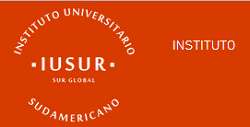Professional practices for mathematics students with the Aprende en casa II and III program
DOI:
https://doi.org/10.25087/resur14a1Keywords:
Reflective practices, Teaching work, Mathematics education, Digital platformsAbstract
This research project refers to the actions carried out by students of the bachelor’s degree in Secondary Education with Specialization in Mathematics (LESEM) at the Escuela Normal Superior, taking the 7th and 8th semesters in the 2020-2021 school year, during the period of the pandemic caused by the COVID-19 virus, within the framework of the national educational programs Learn at Home II and III. The aim of the project is to answer the following questions: What are the difficulties faced by mathematics students when developing their professional practices in the context of confinement when the medium is the use of information technologies; and how do mathematics students put into practice the development of the traits of the graduate profile when the medium for teaching and learning is the use of information technologies?
The objective is to identify difficulties of mathematics students when the medium they use for the development of their teaching work are digital platforms and/or classes presented through TV and radio. According to the features of the graduate profile of the current curriculum of LESEM, the analysis of the mastery of purposes and contents is contemplated, as well as the didactic competence that they put into practice when performing their professional practices with high school students in the framework of the confinement and the program Learn at Home II and III. Some instruments to be used: observation records, lesson plans and diaries; the categories of analysis that will be used to examine their practice are the following: Teaching planning, teaching style, content mastery, temporality and evaluation of learning. The results obtained will be very useful for the proposal of pedagogical alternatives that can be incorporated into the reformulation of current curricula.
Downloads
References
Aldaba, A (2005) El habitus, generador del saber en la práctica docente. INED. Investigación Educativa Duranguense Vol. 4, Septiembre México Universidad Pedagógica de Durango, p 30.
Elizondo, A. Paredes, F., y Prieto, A. (2006). Enciclomedia. Un programa a debate. Revista Mexicana de Investigación Educativa, 11(28),209-224. Recuperado 3 de enero 2021 de: https://www.redalyc.org/articulo.oa?id=140/14002811.
Fierro, C. Fortoul, B y Rosas, L. (2009), Transformando la práctica docente. Una propuesta basada en la Investigación-Acción. México. Paidós pp 20-21.
INEGI (2020) Comunicado de prensa núm. 215/20Educativa, 14 de mayo 202009-224. Recuperado 3 de enero de 2021: https://www.inegi.org.mx/contenidos/saladeprensa/aproposito/2020/eap_internet20.pdf.
IISUE (2020), Educación y pandemia. Una visión académica, México, UNAM, Recuperado 3 de enero de http://www.iisue.unam.mx/nosotros/covid/educacion-y-pandemia.
SEP (1999). Programa de Estudios para la Licenciatura en Educación Secundaria en la Especialidad de Matemáticas. México: SEP.
SEP (2010). Programa de Estudios para la Licenciatura en Educación Secundaria en la Especialidad de Matemáticas. Documentosbásicos México: SEP.
SEP (2002). Tecnología y Didáctica de las Matemáticas. Programa de la Licenciatura en Educación Secundaria con Especialidad en Matemáticas. México: SEP.
SEP (2020). Dirección General de Acreditación, Incorporación y Revalidación. México: SEP; Recuperado 3 de enero 2021 de: https://www.gob.mx/cms/uploads/attachment/file/590881/Oficio_circular_DGAIR_DGDC_001_061120.pdf
RAE (2020), Diccionario de la Real Academia Española, Real Academia Española. España; Recuperado 3 de enero 2021 de: https://www.rae.es/
Ramos, A., Font, V. (2008) Criterios de idoneidad y valoración de cambios en el proceso de instrucción matemática. Relime, México, v. 11, n. 2, p. 233-265, 2008.
Villalpando, I. (2020). La escuela mexicana ante la pandemia: diagnóstico y escenarios posibles. Faro Educativo, Apunte de política Nº9. Ciudad de México: INIDE-UIA.
Published
How to Cite
Issue
Section
License
Copyright (c) 2023 José Luis Medardo Quiroz Gleason, Saúl Elizarraras Baena, Eusebio Vargas Bello, Orlando Vázquez Pérez

This work is licensed under a Creative Commons Attribution-ShareAlike 4.0 International License.










